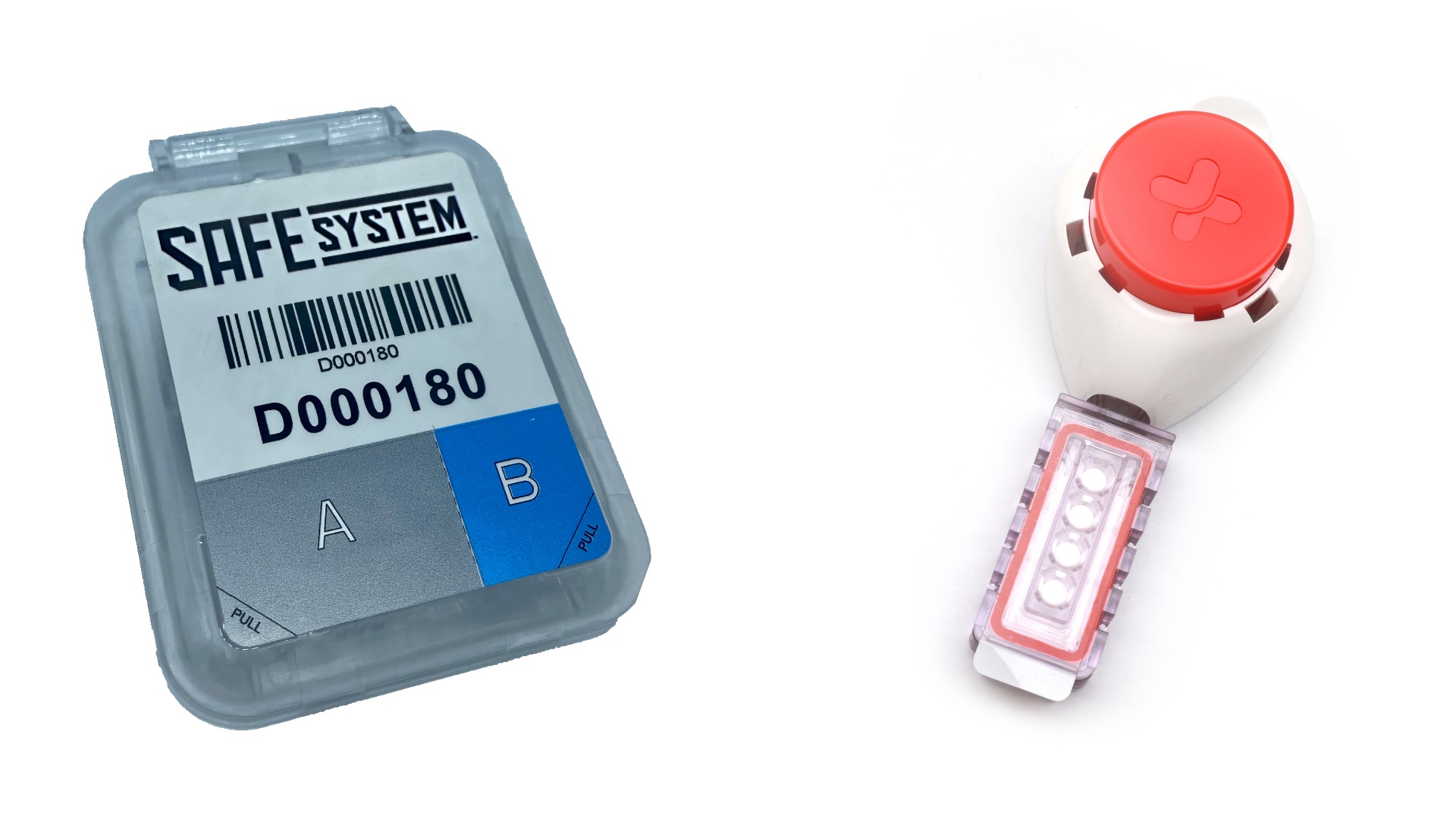Dried Blood Spot (DBS)
An innovative testing method

Dried blood spot (DBS) is a quick and simple way of collecting blood for drug testing. It that involves puncturing the skin just enough to generate a few drops of blood. Those drops are collected on a small filter card, dried, and sent to a laboratory for analysis.
DBS testing comes with a heap of benefits for athletes:
- It's quicker. Collection takes around two minutes and athletes don’t need to rest after exercise.
- It's less invasive for a more comfortable athlete experience.
- It allows for easily adaptable sample sites for athletes with physical impairments.
DBS samples are efficient to transport, can be stored for longer and offer greater retesting opportunities. These efficiencies also mean we can test more often, which means greater assurances for athletes that their sport is clean.
Won’t replace traditional testing
DBS is a valuable additional tool in the fight for clean sport, but won’t replace traditional urine and blood testing at this time.
What to expect

Sample collection
- The Doping Control Officer (DCO) asks the athlete to expose the upper arm (or alternative site). They’ll clean the test site with an alcohol wipe and wait for it to dry.
- The DCO places the Tasso device against the athlete’s skin. It has adhesive backing, so will stick to the arm.
- The DCO holds the device in place as they press the red button. This activates the microneedle, which will prick the skin and immediately retract back into the device. The Tasso device remains on the arm thanks to the adhesive backing.
- A tiny amount of blood (~80 microlitres) is be drawn into the device and down onto the four dots of blotting paper. It will take around two minutes for each dot to turn red.
- Once the collection is complete, the DCO removes the device from the athlete’s arm, wipes the area with an alcohol wipe and pops a plaster on the sample site.
Securing the sample
- The athlete selects a security kit.
- The DCO uses the security kit to remove the sample collection unit from the top of the device. They place it into the security kit and close the lid.
- Closing the lid pushes the samples to the bottom of the kit, separating them into A and B samples.
- The DCO places the security kit into the foil bag for transportation to the lab. The bag contains silica gel to absorb any remaining moisture.
About the device
We're using the Tasso M20 device with Innovero’s purpose-built SAFESystem DBS Kit.
The Tasso M20 uses innovative micro-needle technology to provide painless collection and consistent volumes that meet WADA standards. Each sample is around 20 microlitres of blood, and the device is so simple to use that it doesn’t require a trained phlebotomist.
Innovero’s SAFESystem DBS Kit separates the sample into secure A/B samples, ensuring efficiency and consistency. The SAFESystem Kit is secure and tamper-evident, giving athletes peace of mind.
Find out more about the Tasso M20.
Differences overseas
Although we use the micro-needle device here in NZ, different types of collection devices may be used around the world. If you have any questions, please ask your Doping Control Officer (DCO) at the time of collection.
Collection sites
DBS collections in New Zealand focused on the upper arm, with alternative sites available for athletes with physical impairments. A recent study¹ showed that both athletes and doping control officers prefer upper arm collection over the more painful finger-prick lancet technology that is often used.
From medicine to anti-doping
DBS isn’t new. Its use in medicine dates back to the 1960s, when it was introduced as a way to screen newborns for metabolic disorders – a method that’s still in use today. WADA-accredited laboratories have been researching its potential use in anti-doping since 2000. After successful trials by anti-doping agencies globally, DBS went mainstream for the first time during the 2022 Beijing Winter Olympic and Paralympic Games.
